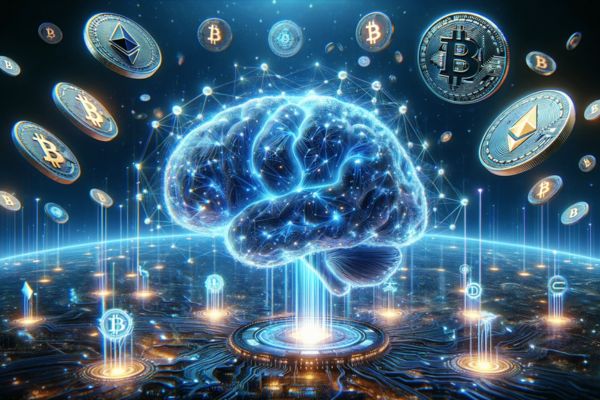In recent years, the convergence of artificial intelligence (AI) and cryptocurrency has given rise to new possibilities and innovations in the tech industry. Both technologies, independently significant, together promise to reshape the future in profound ways. This article delves into how these two powerful domains intersect, their combined potential, and practical applications such as staking Cardano (ADA).
The Synergy Between AI and Cryptocurrency
Artificial intelligence, with its capacity for learning, pattern recognition, and predictive analytics, enhances the capabilities of cryptocurrency platforms. On the other hand, blockchain technology, the foundation of cryptocurrencies, provides a secure, transparent, and decentralized ledger that AI can leverage to improve efficiency and trustworthiness.
Enhancing Security and Fraud Detection
One of the primary benefits of integrating AI with cryptocurrency is enhanced security. AI algorithms can analyze vast amounts of transaction data to detect unusual patterns indicative of fraud. This is particularly crucial in the cryptocurrency market, which has been plagued by scams and hacking incidents. Machine learning models can continuously learn from new data, making fraud detection systems increasingly robust over time.
Optimizing Trading Strategies
Cryptocurrency markets are known for their volatility and unpredictability. AI can assist traders by analyzing market data, historical prices, and even social media sentiment to predict price movements. Algorithms can execute trades at optimal times, maximizing profits and minimizing losses. This kind of AI-driven trading, known as algorithmic trading, is already prevalent in traditional financial markets and is now making significant inroads into the cryptocurrency space.
AI-Powered Decentralized Finance (DeFi)
Decentralized finance, or DeFi, aims to recreate traditional financial systems using blockchain technology. By integrating AI, DeFi platforms can offer more personalized and efficient financial services. AI can automate tasks such as loan approval, risk assessment, and portfolio management, making financial services more accessible and efficient.
Personalized Financial Services
AI can analyze user data to offer tailored financial advice and services. For example, an AI-powered DeFi platform can suggest the best investment strategies based on an individual’s risk tolerance and financial goals. This level of personalization was previously unattainable in traditional finance, highlighting the transformative potential of merging AI with DeFi.
How to Earn Rewards by Staking Cardano (ADA)
Staking is a process where cryptocurrency holders participate in the network by locking up their tokens to support the operations of a blockchain. Cardano, a popular blockchain platform, offers a staking mechanism that allows users to earn rewards. Here’s a step-by-step guide on how to stake Cardano:
- Create a Wallet: First, you need a Cardano-compatible wallet such as Daedalus or Yoroi. These wallets allow you to manage your ADA tokens securely.
- Transfer ADA to Your Wallet: Purchase ADA from a cryptocurrency exchange and transfer it to your wallet.
- Choose a Stake Pool: Cardano operates using a pool system where users delegate their ADA to a stake pool. Research and select a stake pool with a good reputation and performance history.
- Delegate Your ADA: Using your wallet, delegate your ADA to the chosen stake pool. This process is straightforward and typically involves selecting the pool and confirming the delegation.
- Earn Rewards: Once your ADA is staked, you will start earning rewards based on the pool’s performance and the amount of ADA you’ve staked.
By following these steps, you can participate in the Cardano network and earn passive income through staking.
AI in Cryptocurrency Mining
Cryptocurrency mining, the process of validating transactions and adding them to the blockchain, can also benefit from AI. Mining requires significant computational power and energy consumption. AI can optimize mining operations by predicting the most profitable coins to mine, adjusting hardware configurations, and reducing energy usage.
Energy Efficiency
One of the major criticisms of cryptocurrency mining is its environmental impact due to high energy consumption. AI can help address this issue by optimizing energy usage. For example, AI algorithms can predict when electricity rates are lowest and schedule mining activities accordingly. Additionally, AI can enhance cooling systems for mining hardware, further reducing energy consumption.
Hardware Optimization
AI can also play a role in optimizing the performance of mining hardware. Machine learning models can analyze hardware performance data to identify and correct inefficiencies. This not only improves mining efficiency but also extends the lifespan of the hardware, reducing costs for miners.
Future Prospects
The fusion of AI and cryptocurrency is still in its early stages, but the potential is immense. As AI technology continues to advance, its applications in the cryptocurrency realm will likely expand. Future developments might include more sophisticated trading algorithms, enhanced security measures, and even new forms of decentralized applications (dApps) that leverage AI for innovative use cases.
Regulatory Considerations
As with any emerging technology, the integration of AI and cryptocurrency will face regulatory challenges. Governments and regulatory bodies around the world are still grappling with how to oversee and manage these technologies. Ensuring that regulations keep pace with innovation will be crucial to unlocking the full potential of AI and cryptocurrency.
Ethical Implications
The ethical implications of AI in cryptocurrency cannot be overlooked. Issues such as data privacy, algorithmic bias, and the potential for job displacement need to be addressed. Ensuring that AI is used responsibly and ethically in the cryptocurrency space will be essential for gaining public trust and support.
Conclusion
The merger of AI and cryptocurrency represents a frontier of technological innovation with the potential to revolutionize various aspects of finance, security, and everyday transactions. By harnessing the strengths of both technologies, we can create smarter, more efficient, and secure systems. Whether it’s through enhancing security, optimizing trading, or enabling new financial services, the future looks promising as AI and cryptocurrency continue to evolve and intersect.
As we move forward, understanding and engaging with these technologies, such as learning how to stake Cardano, will be crucial for staying ahead in this rapidly changing landscape. The journey of AI and cryptocurrency is just beginning, and its trajectory promises a smarter, more interconnected future.
















